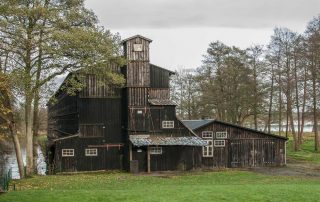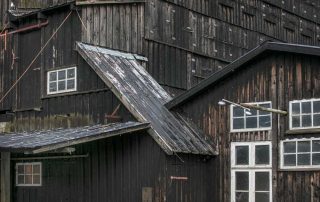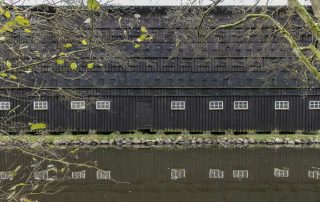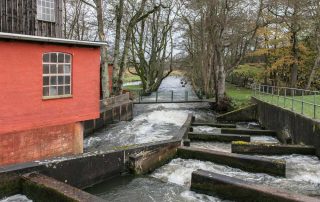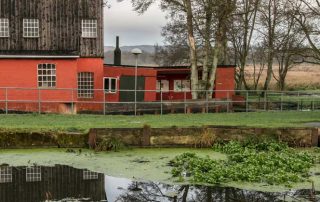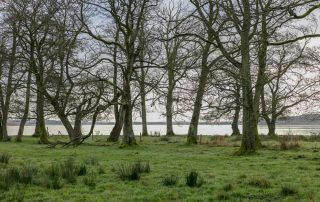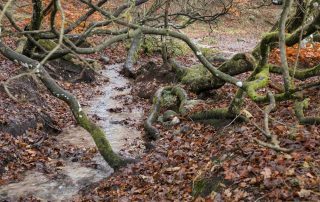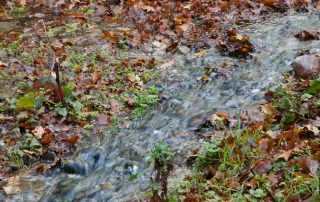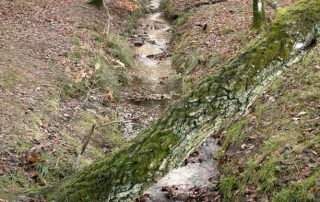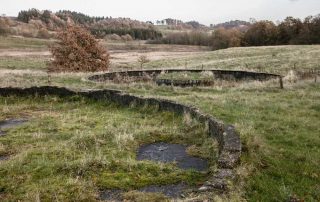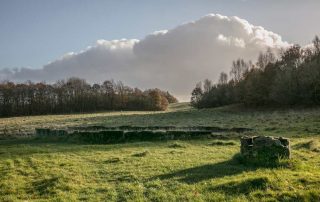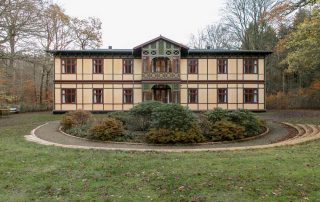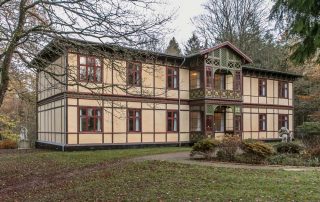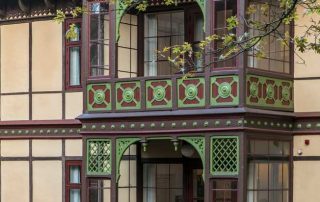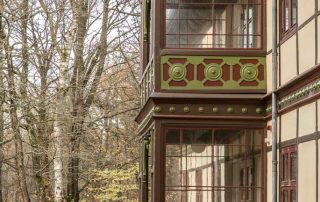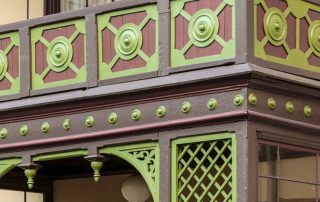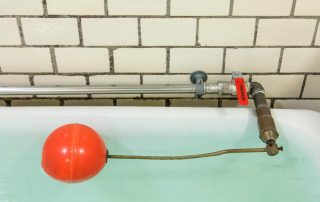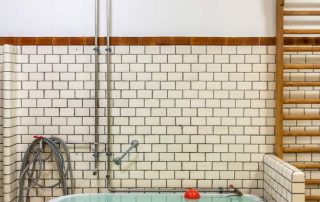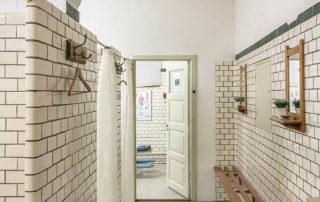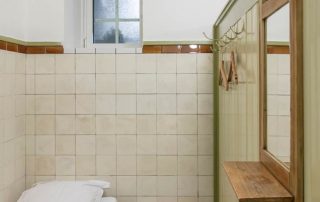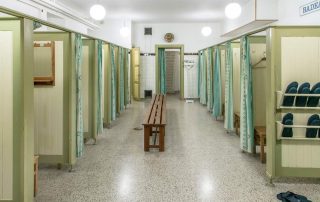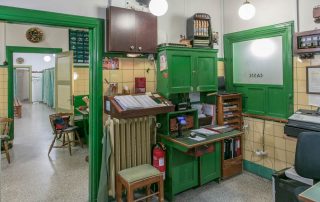4 PLACES IN MID-JUTLAND
Klostermølle
At the western end of Mossø, where the lake feeds into Gudenå stream, we find Klostermølle. The site is in a zone of transition – between lakeshore to the east, low-lying meadowland to the north, and an imposing moraine hill with steep slopes to the south.
Out amid the flat landscape a massive black wooden structure rears up. At first glance we might be puzzled by its purpose and function – because this unusually large building has no equivalent in Denmark…
Excerpt from “Midtjyske Tæpper”
Arne Høi,
Architect MAA, Head of Institute, Institute of Architecture and Culture, Royal Danish Academy of Fine Arts, School of Architecture
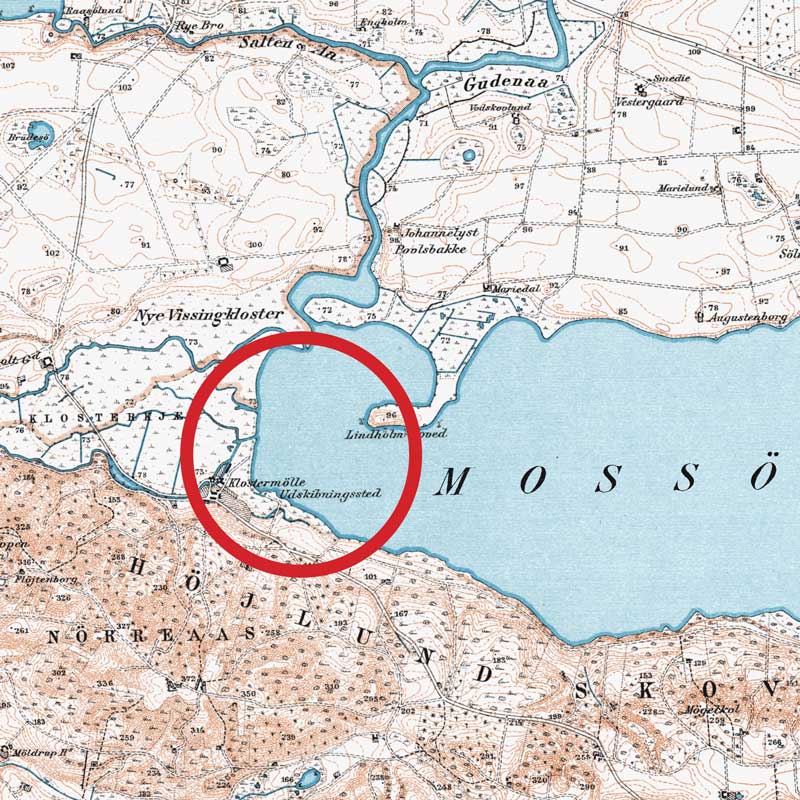
Photo: Ole Akhøj
4 PLACES IN MID-JUTLAND
KLOSTERMØLLE

At the western end of Mossø, where the lake feeds into Gudenå stream, we find Klostermølle. The site is in a zone of transition – between lakeshore to the east, low-lying meadowland to the north, and an imposing moraine hill with steep slopes to the south.
Out amid the flat landscape a massive black wooden structure rears up. At first glance we might be puzzled by its purpose and function – because this unusually large building has no equivalent in Denmark…
Excerpt from “Midtjyske Tæpper”
Arne Høi,
Architect MAA, Head of Institute, Institute of Architecture and Culture, Royal Danish Academy of Fine Arts, School of Architecture
Foto: Ole Akhøj
Tinnet Krat
WATER IS THE VEIN OF LIFE
Where water flows, life follows; and where there is a river, civilization emerges.
In a Danish context, the river is in fact a stream – and while civilization around Gudenå stream might not have been as defining in world history as the communities along the Nile, Tigris, Ganges and Yangtze, less is perhaps sufficient from a Danish perspective.
After all, in the story about the core of Danishness [about what is particularly Danish], the smallness of Gudenå stream is a good illustration of the idea that our grandeur is not derived from palaces of gold; it exists in the traces of intertwined hearts through landscape and time.
Excerpt from “Midtjyske Tæpper”
Anders Laugesen
Radio presenter and public speaker
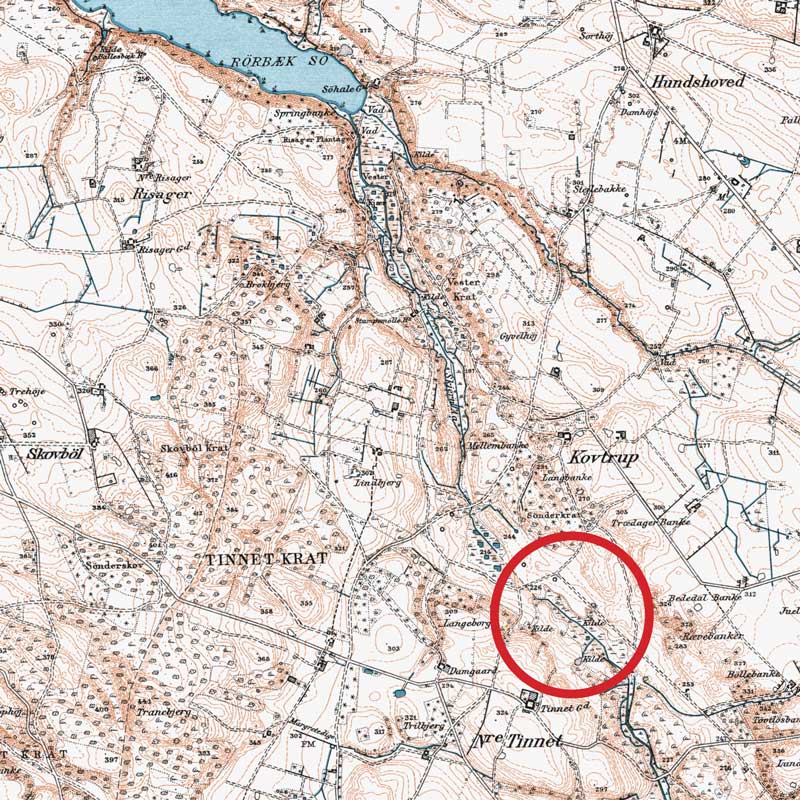
Photo: Ole Akhøj
TINNET KRAT

WATER IS THE VEIN OF LIFE
Where water flows, life follows; and where there is a river, civilization emerges.
In a Danish context, the river is in fact a stream – and while civilization around Gudenå stream might not have been as defining in world history as the communities along the Nile, Tigris, Ganges and Yangtze, less is perhaps sufficient from a Danish perspective.
After all, in the story about the core of Danishness [about what is particularly Danish], the smallness of Gudenå stream is a good illustration of the idea that our grandeur is not derived from palaces of gold; it exists in the traces of intertwined hearts through landscape and time.
Excerpt from “Midtjyske Tæpper”
Anders Laugesen
Radio presenter and public speaker
Photo: Ole Akhøj
Skovvilla
The Danish Art Nouveau architect Anton Rosen had found his métier when, as a 24-year-old, he designed Skovvilla in Silkeborg.
This beautiful two-storey house was the first independent work in an oeuvre that would subsequently set its stamp on the whole country, via buildings as well as arts and crafts. This would culminate in Rosen’s principal work performed for the Danish National Exhibition (Landsudstillingen) in 1909.
Excerpt from “Midtjyske Tæpper”
Iben From
Director, KunstCentret Silkeborg Bad
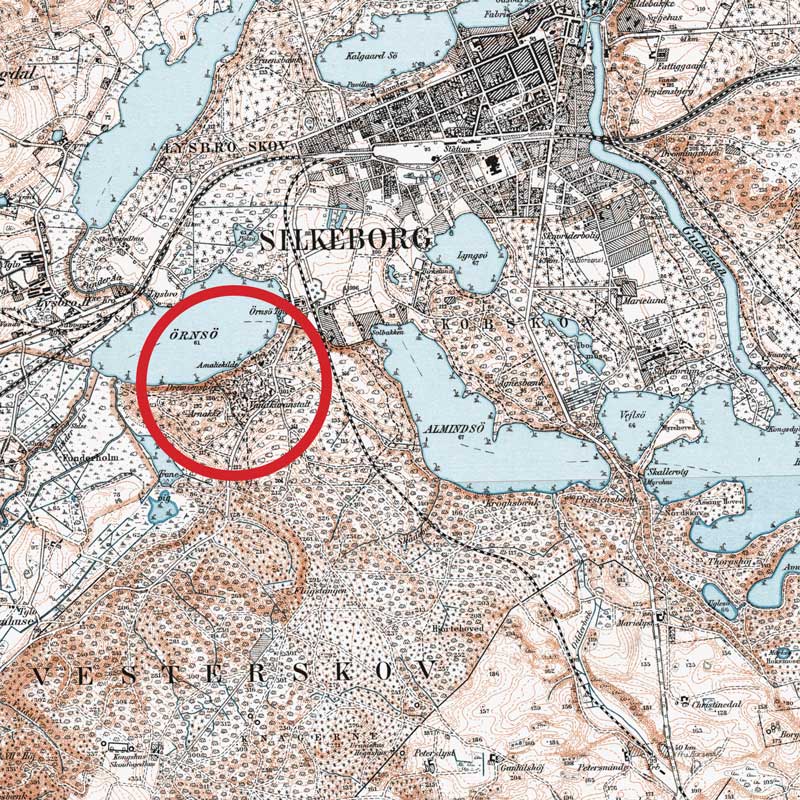
Photo: Ole Akhøj
SKOVVILLA

The Danish Art Nouveau architect Anton Rosen had found his métier when, as a 24-year-old, he designed Skovvilla in Silkeborg.
This beautiful two-storey house was the first independent work in an oeuvre that would subsequently set its stamp on the whole country, via buildings as well as arts and crafts. This would culminate in Rosen’s principal work performed for the Danish National Exhibition (Landsudstillingen) in 1909.
Excerpt from “Midtjyske Tæpper”
Iben From
Director, KunstCentret Silkeborg Bad
Photo: Ole Akhøj
Silkeborg’s bathhouse
Silkeborg’s bathhouse is a time-capsule. Entering its world is a journey to a time when most people did not have access to warm bathing facilities at home and relied instead on public facilities.
Historically, warm bathhouses existed in most of Denmark’s towns.
Now, only one remains – the one in Silkeborg.
Excerpt from “Midtjyske Tæpper”
Lis Thavlov
Chief archivist, Silkeborg Arkiv
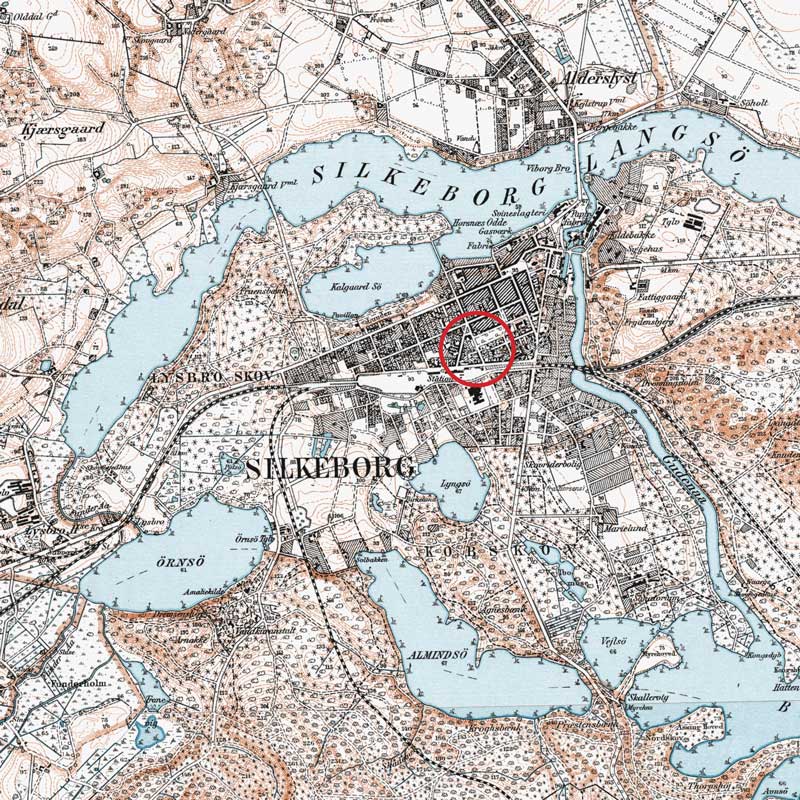
Photo: Ole Akhøj
SILKEBORG’S BATHHOUSE

Silkeborg’s bathhouse is a time-capsule. Entering its world is a journey to a time when most people did not have access to warm bathing facilities at home and relied instead on public facilities.
Historically, warm bathhouses existed in most of Denmark’s towns.
Now, only one remains – the one in Silkeborg.
Excerpt from “Midtjyske Tæpper”
Lis Thavlov
Chief archivist, Silkeborg Arkiv

